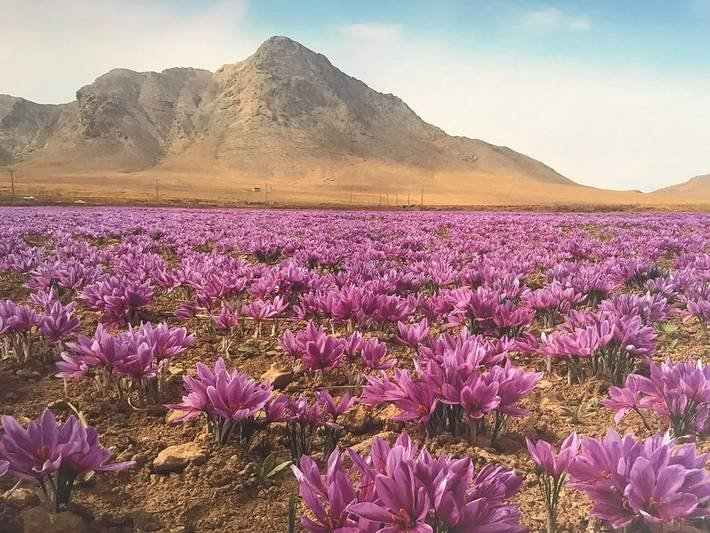Iran’s saffron farming system wins FAO world heritage status

TEHRAN – A traditional saffron cultivation system in Iran has won recognition from FAO as Globally Important Agricultural Heritage Systems (GIAHS).
Titled “Saffron Farming System based on Qanat irrigation in Gonabad, Iran”, the credit reflects a unique way to produce nutritious foods and/or spices using traditional knowledge and skills while improving local people’s livelihoods and preserving biodiversity, FAO website reported on December 21.
The Iranian entrée, along with counterparts in Spain and Morocco, was designated by the GIAHS Scientific Advisory Group based on selection criteria including global importance, values in terms of supporting food and livelihood security, agro-biodiversity, knowledge systems, adapted technologies, cultures, and outstanding landscapes.
“It is the third time that sites in Iran and Spain are added to the global agricultural heritage systems list and the second time for Morocco. FAO's global agricultural heritage network now consists of 57 remarkable landscapes in 21 countries around the globe,” the website wrote.
Cultivation of saffron is practiced in Iran's central plateau that has an arid and semi-arid climate. Severe water shortages in the area pose major threats to food security and livelihoods of local communities.
However, proper use of water resources supplied by the Qanat (or aqueduct) irrigation system and production of high value added products, especially saffron, have created a unique opportunity for farmers and residents of the region to improve their livelihoods.
Saffron does not require large quantities of water compared to cereals, which has resulted in allocation of more areas for the cultivation of this invaluable crop making it a major source of income for many farmer households. Today it plays a key role in creating job opportunities, reducing migration, providing sustainable livelihoods, improving efficiency in water use and productivity as well as developing eco-tourism in the area.
The Ministry of Agriculture announced in November that the saffron output in the country will reach 400 tons by the end of the current Iranian calendar year (March 20, 2019). The annual saffron production stood at 320 tons during the previous year.
AFM/MQ/MG
Leave a Comment